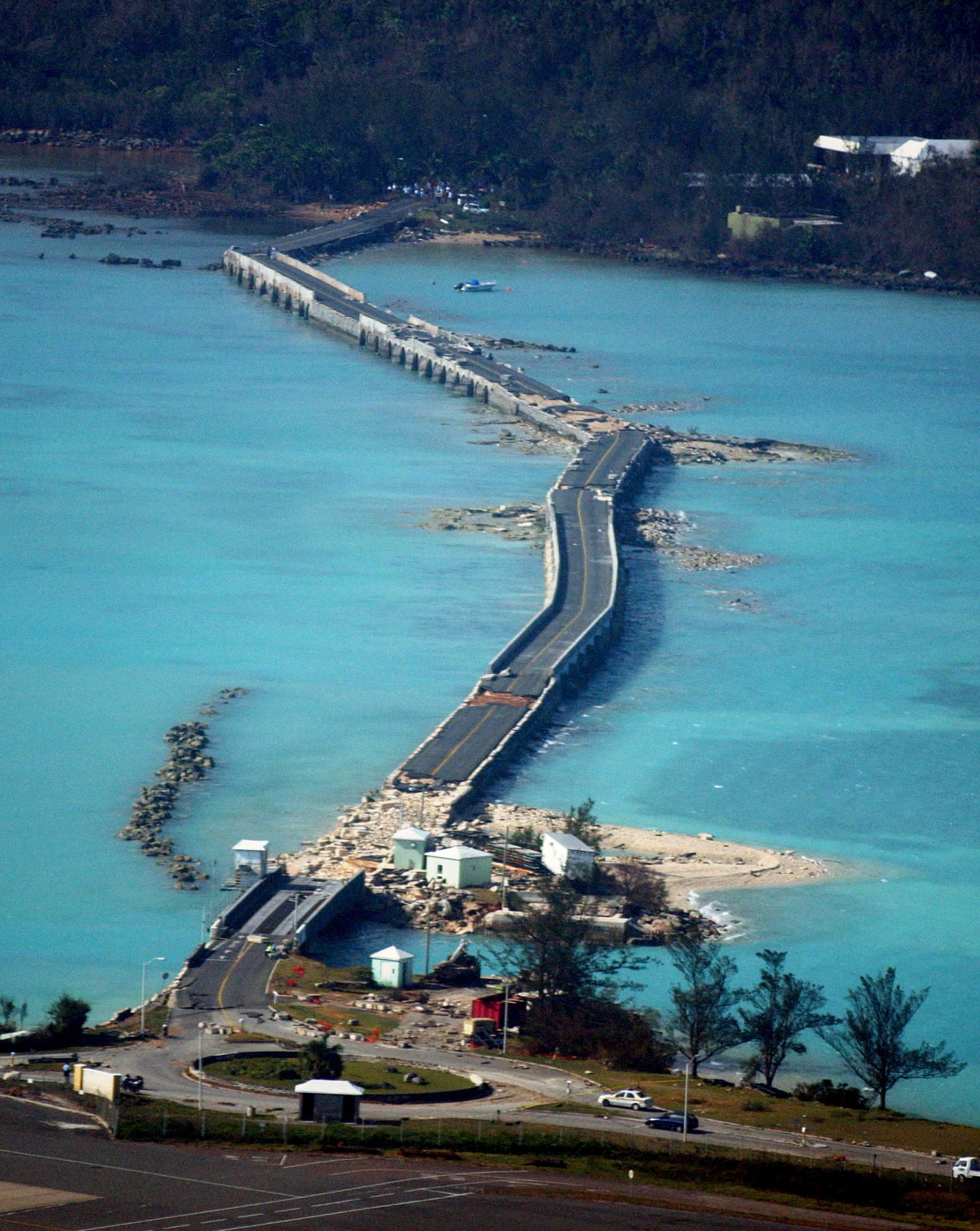by Tim Smith
Tragically killing four people and causing $300 million worth of damage, Fabian stands alone as the most devastating hurricane to hit Bermuda in the modern day.
It is the only storm since the Havana-Bermuda hurricane of 1926 to cause fatalities on the island, after two police officers, a police civilian and a civilian were swept to their deaths from the Causeway when winds pounded the island on September 5, 2003.
PC Stephen Symons, 37, PC Nicole O’Connor, 29, and duty station officer Gladys Saunders, 48, were in a car that stopped on the bridge at about 2.30pm.
The fourth victim was stone mason Manuel Pacheco, 23, who was trapped in a separate car.
Only the body of Mr Symons was ever found, two days later, by the oil docks on Ferry Reach.
A Category 3 storm, Fabian brought gusts of more than 150mph at its peak at about 6pm, and an estimated storm surge of ten feet.
Hurricane force winds began to hit the island from about 2pm and lingered for about ten hours, with the eye skirting to the west, meaning there was no temporary reprieve as Bermuda was battered by the fierce winds of the eyewall.
The House of Assembly and City Hall in Hamilton were among the landmark buildings to suffer damage, while the whole of Bermuda felt severe destruction, from Bridge House and Buckingham in St George’s to Somerset Cricket Club in the West End, and thousands of homes, trees and sailboats in between.
But it was the human cost that weighed heaviest.
An inquest later heard that Mr Symons and Ms O’Connor had been on duty in St George’s and were taking Ms Saunders to her Hamilton Parish home at the end of her shift.
However, their vehicle stalled on the Causeway, along with that of Mr Pacheco, who was returning to his Spanish Point home after securing his boat in St David’s.
Attempts to save them by firefighters, police officers and a construction worker had to be aborted because winds were so strong.
Grieving son Antoine Saunders later recalled he had spoken to his mother Gladys only minutes before she left her job.
“I called her and she said she was on her way home,” he said. “When she didn’t make it home I called again.
“They said she was on the bridge. We called com-ops and they told us the same thing. My dad was going to race down to the bridge in the height of Fabian. He wanted to bring his wife home.”
Shanae Robinson, the daughter of Ms Saunders, said on the fifth anniversary of her death: “Around this time of the year I get emotional and I have a hard time. I haven’t moved on and that’s why I am very emotional about it.”
Premier Alex Scott vowed after the tragedy that in future the Causeway would close when Bermuda received a significant hurricane warning.
He also suggested it could be completely rebuilt to make it more robust – but a decade later families of the victims complained it remained unchanged.
The island’s first Category 3 storm in more than 40 years caused $15 million worth of damage to roads and buildings at the LF Wade International Airport.
The tourism industry took a huge hit as roofs were ripped off hotels and restaurants; suites and beachside bars on the South Shore were reduced to rubble.
The Fairmont Southampton and Sonesta Beach hotels had to shut for months after losing large portions of their roofs, with the Fairmont also sustaining damage to its pool, golf course and pro-shop. Roofs were ripped off several buildings at Ariel Sands.
Meanwhile, Mickey’s and Café Lido restaurants at Elbow Beach were demolished and had to be rebuilt.
Gioacchino DiMeglio, of Elbow Beach, who spent the night in the hotel, said: “The waves took out the cabana down below. The bottom cracked and was bouncing up and hitting the front of the restaurant.
“It was like an earthquake. It shook apart from floor to ceiling.”
A total of 1,200 hotel beds were lost across the island as repairs took place.
The South Shore was one of the worst hit areas and about one in ten roofs were said to be damaged.
Warwick resident Charles Williams told The Royal Gazette the day after the storm: “I watched the plywood ripped right off that neighbour’s house. And the roof came off Mr Johnson’s house and Mr Tucker’s place too.”
The island was at a standstill after the storm, with roads blocked by fallen trees, about 25,000 homes without power, thousands of tourists stuck in hotel lobbies, 500 public work sites damaged and farm crops devastated.
Residents played their part in getting the island back to a functioning state, taking care of vulnerable and elderly neighbours and using their chainsaws to clear the roads.
Fabian’s impact on the environment was initially feared to be catastrophic.
Shortly after the storm, environmentalist David Wingate said cliff and soil erosion on the South Shore was worse than anything seen since the last glacial era 1,200 years ago and warned that the destroyed vegetation would take decades to regrow.
But a blow to the island’s cherished cahow population proved not to be fatal.
Concrete nests for cahows built by the Government were washed away by giant waves, sparking fears that the indigenous species would be lost forever.
A translocation programme, which involved moving the chicks to artificial homes on Nonsuch Island shortly before fledgling, was set up in 2005. By last year, the number of breeding pairs had risen to more than 130.

